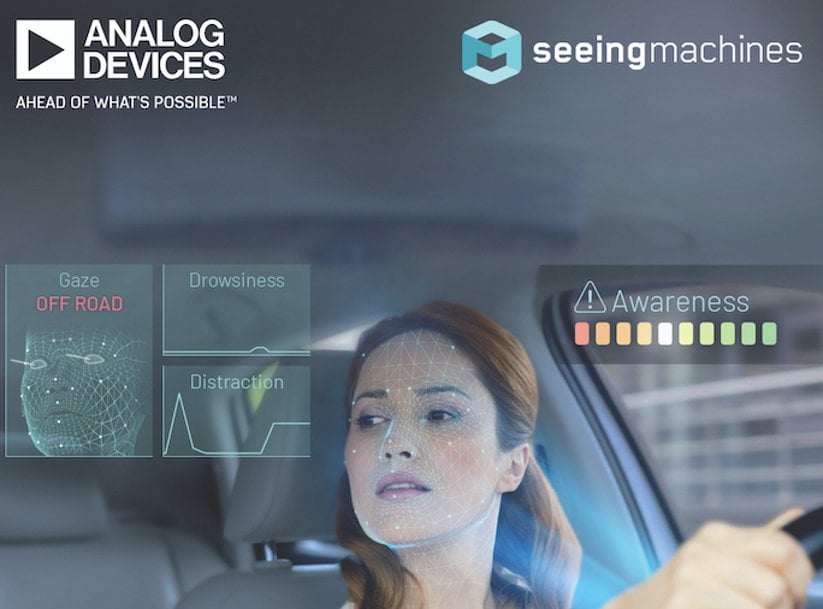electronics-journal.com
07
'23
Written on Modified on
ANALOG DEVICES AND SEEING MACHINES COLLABORATES TO ACCELERATE SAFER DRIVING, ADVANCED DRIVER ASSISTANCE SYSTEMS
Analog Devices, Inc. and Seeing Machines announced a collaboration in support of high-performance driver and occupant monitoring system (DMS/OMS) technology.

Long-haul driving and congested traffic are two scenarios where driver fatigue and distraction often occur and frequently cause accidents, resulting in injury or worse. New and sophisticated advanced driver assistance systems (ADAS) are rapidly evolving to support safety across increasing, varied levels of autonomous capability.
The collaboration pairs ADI’s advanced infrared driver and high-speed Gigabit Multimedia Serial Link™ (GMSL) camera connectivity solutions with Seeing Machines’ artificial intelligence (AI) DMS and OMS software to support powerful eye gaze, eyelid, head, and body-pose tracking system technology that more accurately monitors driver fatigue and distraction. The combined solution will readily meet European Commission General Safety Regulations (GSR) and European New Car Assessment Program (Euro NCAP) requirements. It is also conducive to enabling future occupant monitoring features and a range of in-cabin camera placement options, previously unworkable due to challenges related to power efficiency, functional safety, hardware footprint, and image quality.
Semi-autonomous driving systems rely on in-cabin DMS and OMS to recognize and address driver fatigue and distraction. These systems must operate in all lighting conditions and require proper infrared lighting to ensure image quality on a frame-by-frame basis necessary for eye tracking in real time. The combined solution from ADI and Seeing Machines leverages ADI’s industry-first infrared driver for DMS and OMS, capable of delivering up to 100W of peak power in a compact and functionally safe solution. This allows for a non-intrusive, smaller camera module in a vehicle’s cabin.
Seeing Machines’ AI software interprets signals from the optical hardware, monitors and diagnoses the problem, and combines with ADAS features to enable output signals to warn drivers and vehicle occupants when necessary.
www.analog.com

